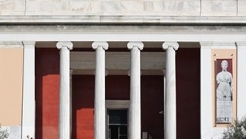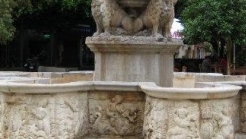

Greece
The Monastery of Agia Triada of Τzagkarolon was built in the early 17th century by wanne Ιeremia and Larentio,venetian-cretan family of Τzagkarolon in smaller, property of hieromonk Joachim and Sofianou.
The Monastery of Agia Triada of Τzagkarolon was built in the early 17th century by wanne Ιeremia and Larentio,venetian-cretan family of Τzagkarolon in smaller, property of hieromonk Joachim and Sofianou. Although the bulk of the relics was lost in various historical circumstances, the small museum exposed images, including St. John the Theologian (16th century), Agios Nikolaos (17th century), the ένθρονου Pantokrator Church of Zoodochos Pigi’s and Monday’s presence, works of the well-known Hanioti painter Emmanuel Skordili priest around. Also kept filigreed gold canonicals, handwritten operating 12th-century, newer manuscripts, books and documents, crosses and other ecclesiastical relics.<span style="\"font-size:" medium;\"="">


The National Archaeological Museum of Athens is the biggest museum in Greece, and one of the most important ones worldwide.The rich collections, with more than 11.000 exhibits, offer the visitor a complete image of the ancient Greek civilization..


Heraklion is not just a city in the next visitor’s destination. Expresses something more, something deeper, a history of thousands of years. With this thought must learn the traveler to "read" the area beyond the mundane habits that require a visit to museums or at Knossos.


The Museum of ancient Eleutherna - Homer in Crete is the first archaeological site museum in Crete. The museum created to house the results of the excavations carried out for thirty years in the ancient city of Eleutherna. The originality of this museum is that the objects of the permanent exhibitio
1039 Ε 6061 01515 00